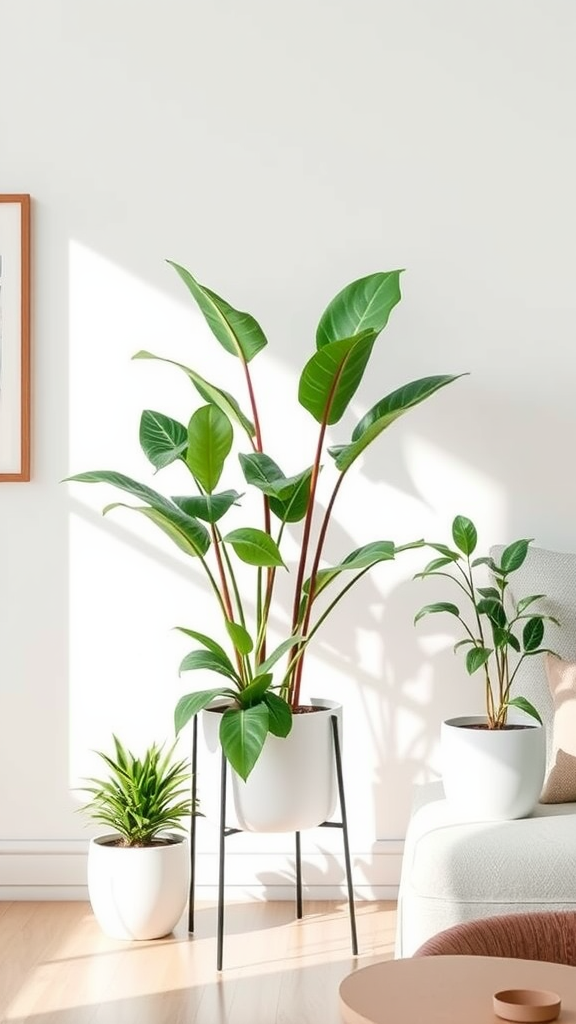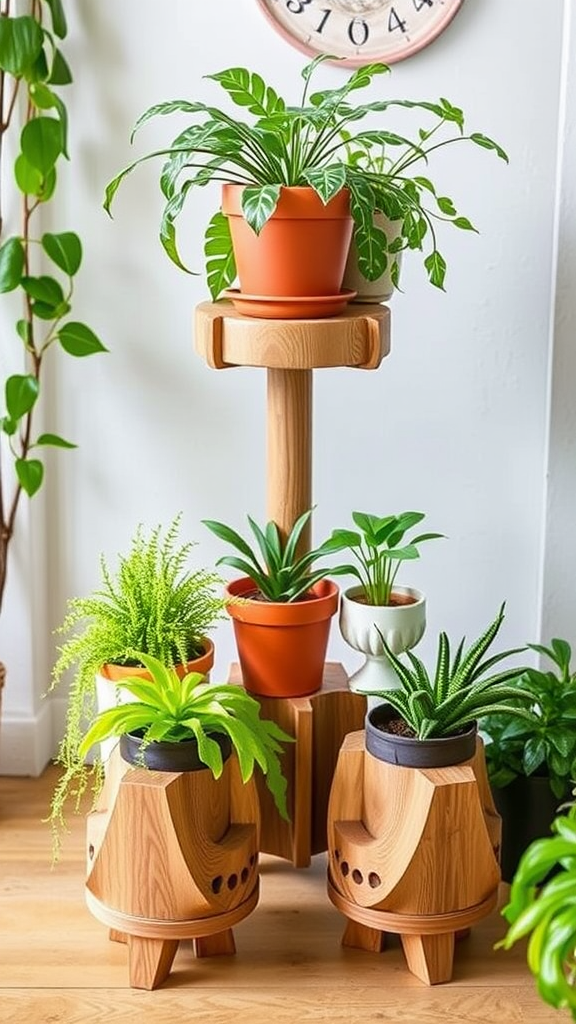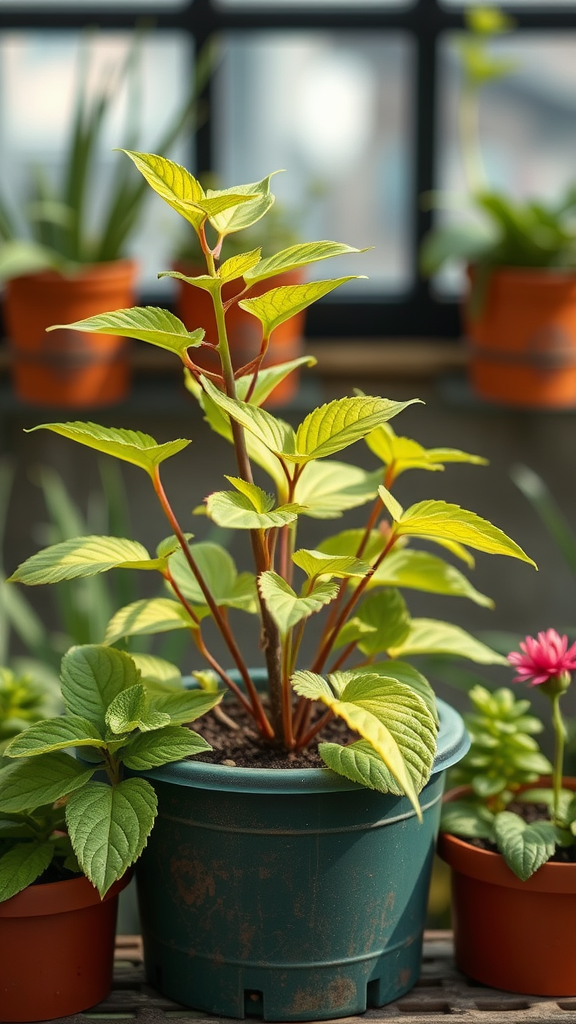The Benefits of Incorporating Low-Light Plants in Your Office Environment
The office environment can sometimes feel dull and uninspiring, especially in low-light spaces where natural sunlight is limited. However, incorporating plants that thrive in these conditions can transform your workspace into a vibrant and energizing atmosphere. Here are some of the key benefits of adding low-light plants to your office.
Enhancing Air Quality
One of the most significant advantages of indoor plants, particularly those suited for low-light areas, is their ability to improve air quality. They act as natural air purifiers, absorbing toxins and releasing oxygen. For instance, plants like the snake plant and pothos are known to filter several common pollutants, making the air around you cleaner. This leads to a healthier environment for you and your colleagues.
Boosting Mood and Productivity
Studies have shown that the presence of plants in an office setting can significantly enhance mood and overall well-being. When you have a touch of greenery around, it can reduce stress and increase feelings of tranquility. This mood boost can lead to better focus and productivity. For example, studies reveal that workers near plants report feeling more satisfied and motivated as they go through their daily tasks.
Creating a Welcoming Atmosphere
A workspace adorned with plants can create a more inviting and friendly environment. This can be particularly important in offices where collaboration and communication are key factors. When your office feels warm and welcoming, it can strengthen team bonds and improve relationships among colleagues. Plus, it showcases your company’s commitment to a healthier workplace.
Minimal Maintenance Requirements
One of the common concerns about office plants is the perceived need for constant care. However, many low-light plants require minimal maintenance and are perfect for busy work settings. Options like the ZZ plant and peace lily can thrive with just occasional watering and indirect light. This means you can enjoy the benefits of greenery without the stress of demanding plant care.
Increasing Creativity
The presence of plants can also stimulate creativity in the workplace. The calming effect of greenery can inspire fresh ideas and innovative thinking. A simple addition of a low-light plant like the philodendron or spider plant can encourage out-of-the-box brainstorming sessions and improve overall creative output.
Noise Reduction
Another often-overlooked benefit of plants in the workplace is their ability to reduce noise levels. While they won’t completely drown out the sounds of a bustling office, they can absorb and deflect sound, creating a quieter atmosphere. This is especially beneficial in open-plan offices where background noise can be distracting. larger plants around workspaces can help mute these sounds, allowing for increased concentration.
Plants That Excel in Low-Light Conditions
To reap these numerous benefits, consider incorporating the following low-light plants into your office:
- Snake Plant: Known for its hardy nature and unique foliage, it’s one of the most popular choices.
- Pothos: A beautiful trailing plant that’s perfect for shelves or hanging baskets.
- ZZ Plant: Almost indestructible, making it a great choice for busy workplaces.
- Peace Lily: Offers stunning white blooms and thrives in low light conditions.
- Spider Plant: A resilient plant that’s great for beginners and very easy to propagate.
- Philodendron: Ideal for shelving or desk space, providing a touch of lush greenery.
- Cast Iron Plant: Known for its toughness and ability to withstand neglect.
By incorporating these low-light plants into your office, you’re not just adding décor; you’re enhancing the overall work environment. You’ll witness improved air quality, reduced stress levels, and a more inviting atmosphere. So don’t wait—bring nature indoors and feel the difference it can make in your office culture.
Easy Care Tips for Maintaining Low-Light Office Plants
Having plants in a low-light office can boost your mood and improve air quality. However, caring for these plants requires some attention. Here are easy care tips to help your low-light office plants thrive.
Choose the Right Plants
Not all plants can adapt to low-light conditions. Select plants that naturally thrive in dim environments. Some popular choices for low-light office plants include:
- Snake Plant
- Pothos
- ZZ Plant
- Peace Lily
- Spider Plant
- Cast Iron Plant
- Philodendron
Know Your Watering Needs
One of the most common mistakes in plant care is overwatering. In low light, plants generally require less water. Here are steps to follow:
- Check the Soil: Before watering, stick your finger about an inch into the soil. If it feels dry, it’s time to water.
- Adjust Your Watering Schedule: In low-light conditions, consider watering every two weeks instead of weekly.
- Use Proper Drainage: Make sure the pots have drainage holes to prevent water from sitting at the bottom.
Provide Adequate Humidity
Low-light conditions can also mean lower humidity levels. Many tropical plants prefer humidity. Here are ways to boost humidity:
- Use a humidifier in your office.
- Place a tray of water with pebbles near your plants.
- Group your plants together to create a microclimate.
Rotate Your Plants
Even low-light plants need some light to grow. If they are always in the same spot, one side may become leggy or weak. To ensure even growth:
- Rotate your plants every couple of weeks.
- Change their position slightly so that all sides get exposure to available light.
Dusting the Leaves
Little dust particles can accumulate on your plant leaves, blocking sunlight and making them look dull. Keep them clean:
- Wipe leaves with a damp cloth every month.
- Use a soft brush to remove any stubborn dust.
Feed Wisely
Low-light plants often don’t need as much fertilizer as those thriving in brighter settings. Here are key tips:
- Use a diluted, balanced houseplant fertilizer during the growing season (spring to summer).
- Avoid fertilizing in the winter when plant growth slows down.
Watch for Pests
Even low-light plants can attract pests like spider mites, aphids, and mealybugs. Check your plants regularly:
- Inspect Regularly: Check both the tops and undersides of leaves for pests.
- Use Natural Remedies: For minor infestations, use a mix of water and soap to spray the affected areas.
- Quarantine New Plants: Always keep new plants away from existing ones for a few weeks to ensure they are pest-free.
Pay Attention to Growth Patterns
Understanding the specific growth habits of each plant can make caring for them easier:
- Some plants may grow leggy in low light, indicating they need more light.
- Others might show signs of stress, like dropping leaves, indicating either overwatering or humidity issues.
These easy care tips into your routine can help your low-light office plants flourish. Taking the time to understand their needs makes the journey rewarding, transforming your workspace into a refreshing and vibrant environment.
Conclusion
Low-light plants into your office environment offers numerous benefits, from enhancing aesthetics to improving air quality. These plants not only boost your mood but also contribute to a more productive workspace. The calming presence of greenery can reduce stress levels, leading to a healthier and happier workplace. Additionally, having plants around can foster creativity and focus, which is essential for achieving optimal work performance.
Caring for low-light plants is simple and straightforward, making them ideal for busy office settings. By understanding their specific needs and following easy maintenance tips, such as occasional watering and proper placement, you can ensure these plants thrive in the often limited light conditions of an office. Remember, even the hardest-to-kill plants need some attention, but with a little effort, you can enjoy greenery without the stress of complicated care routines.
Embracing plants in your office not only livens up the atmosphere but also promotes well-being among employees. these easy-to-care-for low-light plants can transform your workspace into a more inviting, refreshing environment—one that encourages collaboration and creativity. The positive impact of plants is clear; they’re not just decorative, but essential allies in creating a vibrant and lively office setting. So why wait? Start adding some greenery to your workspace today and enjoy the many advantages that come with it.





